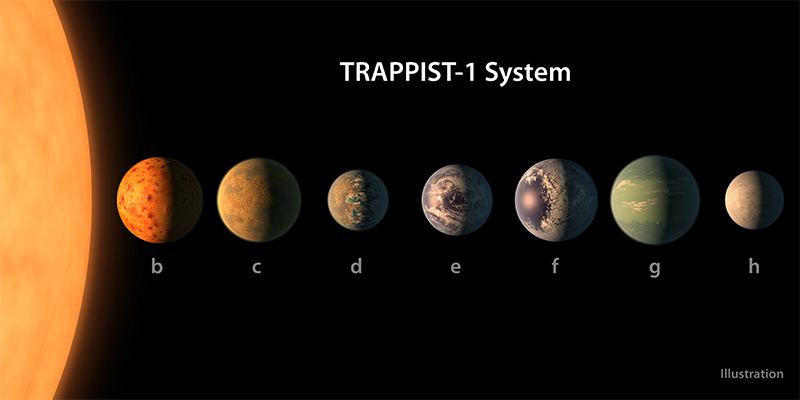An international team of experts have teamed up to conclude that the interstellar visitor isn’t what we hoped it was.

It probably comes as no surprise that the scientific consensus of ‘Oumuamua’s origins have concluded that it is a natural object, despite how funky and alien spaceship-looking the interstellar visitor at first appeared. According to a new study published today in the journal Nature Astronomy, the findings of 14 international experts have been pooled to categorically say that ‘Oumuamua isn’t an artificial object piloted by an intelligent extraterrestrial species, but instead “has a purely natural origin.”
“The alien spacecraft hypothesis is a fun idea, but our analysis suggests there is a whole host of natural phenomena that could explain it,” said the team’s leader Matthew Knight, from the University of Maryland, in a statement.
This most recent study comes hot on the heels of a fair amount of speculation that the spinning cigar-shaped object, which was detected by the Pan-STARRS1 telescope in Hawaii on Oct. 19, 2017, could be artificial. One of the more vocal advocates of this possibility, Avi Loeb of Harvard University, investigated the idea that ‘Oumuamua may be an interstellar probe that used our sun’s radiation pressure for a boost in velocity as it flew through the inner solar system. While the world’s media loved this concept (as did I), many scientists balked and emphasized the need to take the Occam’s razor approach and instead focus on natural explanations, not aliens. But, as pointed out by Loeb, while more likely explanations existed, considering the most extreme ones is still a part of the scientific process.
“This is how science works,” said Loeb in an interview for The Harvard Gazette late last year. “We make a conjecture … and if someone else advances another explanation, we will compare notes and the next time we see an object of this type we will hopefully be able to tell the difference. That’s the process by which science makes progress.”
Deep down, we all had the sense that the interstellar visitor likely wasn’t aliens (though it did spawn some wonderful debates about mind-boggling interstellar distances, the challenges of visiting other star systems, and why ET would bother popping by for a whistle-stop tour without saying “hi”), but this new study convincingly sounds the death knell for the possibility of aliens taking a joyride through our galactic neighborhood.
The new study is clear, in which the researchers write: “Here we review our knowledge and find that in all cases, the observations are consistent with a purely natural origin for ‘Oumuamua.”
So, what does the study conclude?
The object is most likely an ancient interstellar comet that randomly encountered our solar system after drifting through interstellar space for millions of years. The mechanisms by which ‘Oumuamua was ejected from its star system of birth remains up for debate, but the study’s authors point to the likelihood of a Jupiter-like world that may have gravitationally ejected the object when it strayed too close, helping it achieve escape velocity and a future lost deep in the interstellar expanse—until it encountered our solar system.
Even the behavior of the ancient comet as it traveled through the inner solar system agrees with theoretical predictions. The small boost in velocity as it made close approach to our sun was caused by ices (entombed under ‘Oumuamua’s surface) being heated and vented into space as a vapor (and not aliens hitting the gas). This behavior in comets is well-known, but the problem with ‘Oumuamua is that it exhibited few signs of being a comet—it didn’t develop a tail nor did it develop a coma, two clues of its cometary nature. But this object is different from the comets we know; it has been drifting through the galaxy for eons, perhaps it lost the majority of its ice in previous stellar encounters, or perhaps it contained little in the way of volatiles during its formation. Comets and asteroids also have a lot more in common that the textbooks may tell us, so perhaps it did vent small quantities of vapor to give it a boost, but not enough for astronomers to observe a tail and coma. In short, ‘Oumuamua shares similar traits to other objects that exist in our solar system
“While ‘Oumuamua’s interstellar origin makes it unique, many of its other properties are perfectly consistent with objects in our own solar system,” added Robert Jedicke of the University of Hawai’i’s Institute for Astronomy (IfA) and collaborator in the Nature Astronomy study.
The key thing that makes ‘Oumuamua so captivating, however, is not how it behaved when it entered the solar system and used the sun to change its course, it’s that we know it came from interstellar space, the first of its kind that we’ve ever encountered. Undoubtedly, the solar system has been visited countless times by junk that has been shed by other stars in our galaxy—there’s a lot of stars carrying around a lot of comets and asteroids, after all, they’re probably scattered around the Milky Way like baby’s toys being thrown out of strollers—but this is the first, special interstellar visitor that we’ve only just had the ability to detect.
The best news? There will be more.
Humanity is rapidly advancing through a “golden age” for astronomy and, if these interstellar vagabonds are as common as we now believe, we’re on the verge of detecting many more of them. For example, the Large Synoptic Survey Telescope (LSST), which is being constructed in Chile, is expected to become operational in 2022 and it will be so powerful that astronomers predict at least one ‘Oumuamua-like object will be spotted per year. Once we grasp how often these things turn up, perhaps we’ll be prepared enough to have a robotic spacecraft intercept one to see what these visitors from other stars really look like instead of depending on distant observations.
Of course, this whole episode could be a cautionary tale. Perhaps our advanced alien neighbors disguise their spacecraft to look like passing comets to get a closer look of primitive intelligences such as ourselves.* ‘Oumuamua being identified as an interstellar comet is exactly what they want us to believe…
*This was inspired by a tweet I read this morning, but I forgot who tweeted it and it appears I didn’t “like” it, so it’s since been lost to the twitterverse. Thank you to whomever tweeted it, it formed the seed to this blog!












